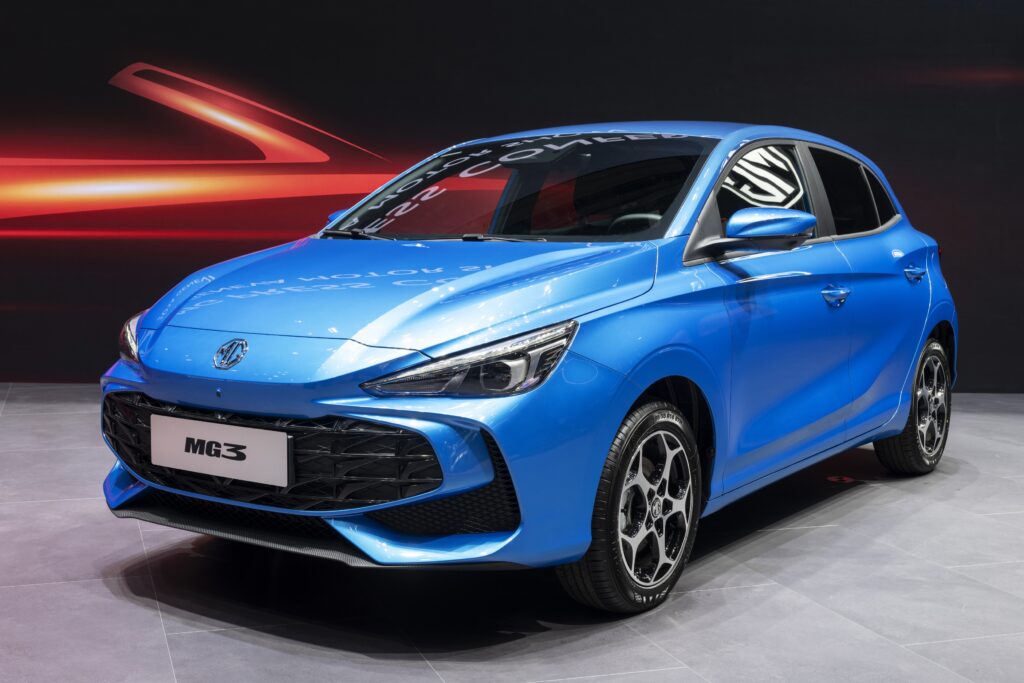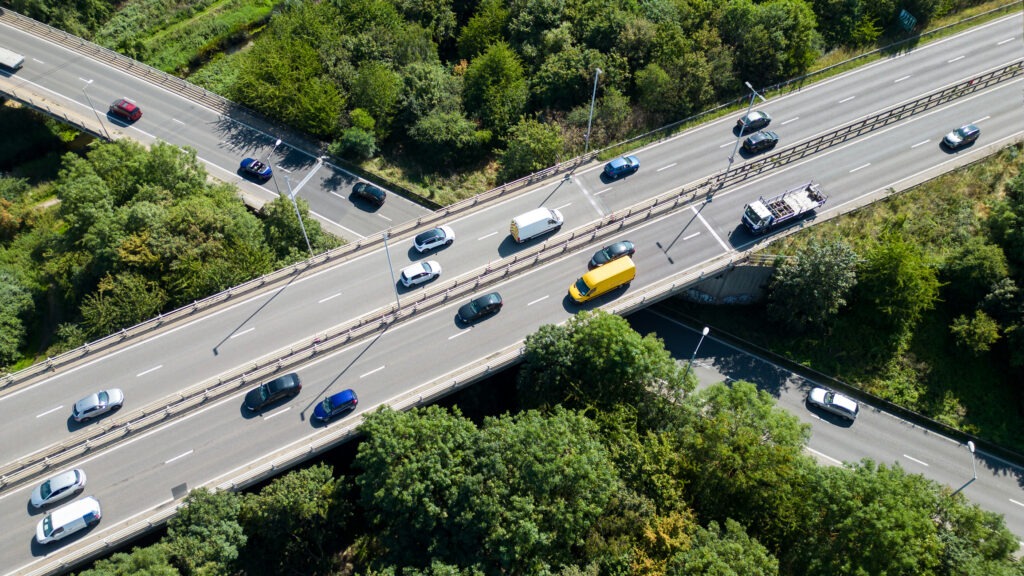Petrol and diesel registrations drop dramatically in large European markets
04 October 2024

Lacking consistency, Europe saw two of its biggest new-car markets experience declines in September while another returned to growth. Autovista24 special content editor Phil Curry examines the latest registrations figures.
Following poor results in August, the new-car markets of France, Italy and Spain were hoping for better fortunes in September. For two of these countries, however, these wishes did not come true.
France and Italy both saw declines in passenger-car registrations last month. Both markets saw their internal-combustion engine (ICE) deliveries collapse, contributing to double-digit year-on-year declines. Yet Spain experienced growth in September, putting it back on track to a full-year improvement.
However, Spain also saw big declines in petrol and diesel registrations. This suggests drivers are turning away from traditional propulsion technologies. Instead, the hybrid market seems to be more attractive.
French struggles continue
Of Europe’s big five markets, France has consistently been the worst-performing in terms of growth. The country has only seen figures improve three times in the first three quarters of 2024. Then in September, the market delivered its second double-digit decline in a row. It also marks five months of consecutive registration decreases.
Deliveries fell by 11.1% last month, with 139,004 units delivered, according to Autovista24 calculations based on PFA data.
While the country was able to count on a strong start to 2024 for positivity in its year-to-date figures, these are now in decline. A small dip in August has been worsened by September’s performance, with the market down 1.8% across the first nine months of the year.
This decline was driven by petrol and diesel powertrains, although there were losses in every category except for full hybrids (HEVs) and mild hybrids (MHEVs). September’s numbers highlight the current state of the French new-car market. It is struggling to engage drivers with low and zero-emission models while also turning them away from options ICE options.
ICE in turmoil
In terms of volume loss, petrol was the worst-performing drive technology in September. The powertrain saw deliveries drop by 31.9% to 36,047 units, according to Autovista24 calculations.
This was a difference of 16,868 passenger cars compared to the same month last year. Petrol was therefore the main driver of decline across the country’s new-car market in September.
Accounting for 25.9% of deliveries, the fuel type saw its lowest market share of the year so far. This was down by 8 percentage points (pp) compared to 2023. With an average share of 33.5% in the first quarter, petrol dropped to an average of 29% between July and September. A stronger share result in August, due to bigger declines across other powertrains, prevented this average from sinking lower.
In the first three quarters of the year, petrol registrations were down by 18.2%. While they held 31.1% of the market, this was down by 6.3pp, driven by poor results across the year. So far in 2024, the powertrain has only managed an improvement in February.
Diesel registrations fell 39.1% in September, but this was based on a lower volume. A total of 8,077 units took to French roads, 5,193 below last year’s tally. Its 5.8% market share was 2.7pp lower than in September 2023.
From January to September, volumes of new diesel cars slumped 26.2%. It captured 7.6% of the market in this period, down 2.5pp.
This meant the ICE market fell by 33.3% in September, and 19.9% across the first nine months of the year. Its market share of 31.7% last month was a staggering 10.6pp below its 42.3% hold 12 months ago. It seems drivers are turning away from fossil-fuel powertrains in the country.
BEVs no better
Yet this drive away from more polluting vehicles is not helping the battery-electric vehicle (BEV) market. In September, all-electric registrations were down 6.3%, a second monthly decline in a row and the third this year.
BEVs performed well in the French new-car market until May when growth slowed. This early performance meant the zero-emission technology recorded registration growth of 6% at the end of the third quarter. But this slowdown has likely not been helped by the introduction of provisional tariffs on Chinese-built BEVs, which came into force in July.
At the beginning of 2024, the BEV subsidy programme in France began using carbon footprints to determine eligibility. This effectively eliminated Chinese-built models from the list of applicable vehicles. Lower prices could have encouraged consumers to still consider purchasing these models. However, the introduction of provisional tariffs may have changed the financial landscape.
BEVs took a 20.3% share of all registrations last month. Despite declining deliveries, this was an improvement of 1pp year-on-year, due mostly to the poor performance of other powertrains. In the first nine months of 2024, the all-electric powertrain held a market share of 17.1%, up from the 15.9% recorded at the same point in 2023.
Hybrid highs
France’s new-car market has come to rely on hybrids in recent months. The country splits its figures into HEVs and MHEVs, and both saw strong growth in September. HEVs improved by 25.2% with 28,763 units delivered. Meanwhile, MHEV registrations were up 57.5%, as 24,396 new models took to the roads.
This trend gave HEVs a market share of 20.7%, up by 6pp year on year. MHEVs also impressed, with their 17.6% hold improving by 7.7pp.
Plug-in hybrids (PHEVs), however, suffered a steep decline. Figures were down 35.8% compared to September 2023, with 10,075 units registered. This left the powertrain with a market share of 7.2%, down by 2.8pp year on year.
Italy suffers with ICE
The Italian market also struggled in September, once again due to a collapse in the ICE market. The country recorded 121,724 registrations last month, a 10.7% decrease year on year according to industry body ANFIA.
‘The negative trend of these last two months leads us to have to revise downwards the closing forecasts for 2024, falling from an estimate of 1,624,000 units to 1,555,000, about -0.8% compared to 2023,’ commented Roberto Vavassori, president of ANFIA.
New petrol cars suffered their second decline in a row, with 23.3% fewer models delivered. Just 31,072 units took to the country’s roads, 25.5% of all registrations in the month. This was down by 4.2pp compared to September 2023.
Until August, the petrol-powered models had been popular with buyers in the country. This shows in the year-to-date figures, where the powertrain remained up by a healthy 6.3% despite two drops in a row.
Diesel also suffered a steep decline. The powertrain, while not enjoying the successes of the past, still proves popular with drivers in Italy when it comes to volumes. However, in September, registrations declined 24.8%, with 15,563 units delivered. This market has struggled more across the year, with figures down by 21.8% in the first three quarters of 2024.
With carmakers reducing the number of diesel powertrains they offer, focusing instead on electrified variants, the drop in Italy may be a result of supply. Buyers who are unable to source a model could be turning to the used market, rather than buying a new car which does not appeal.
BEVs drive the market
Italy’s BEV market bounced spectacularly in June, following the introduction of new incentives. Funding for these was, however, depleted almost instantly. This means figures for July and August returned to normal levels, with a decline in the latter month.
However, BEV registrations improved strongly in September. Deliveries were up by 30%, with 6,422 units leaving dealerships. This was still lower than many other markets in Europe, with the powertrain share sitting at 5.3%. This is favourable compared to last year’s 3.6% hold. Although, in the year to date, BEVs claimed 4% of the market. This was just 0.1pp ahead of their position at the same time last year.
While all-electric powertrains enjoyed a slightly better time, the same cannot be said for PHEVs. The plug-in technology declined 24.3% in September, with 4,102 units delivered. This resulted in a 3.4% market share, the lowest of all powertrains in the month, down 0.6pp on last year.
PHEVs have struggled in 2024, with year-to-date figures declining by 24.2% to 39,902 units. At the same point in 2023, the technology outperformed BEVs with a market share of 4.5%, ahead of the all-electric technology by 0.6pp.
However, the tables have turned this year. While BEVs held 4% of the market across the first nine months of 2024, PHEVs had just 3.3%. The results mean that electric vehicles (EVs) improved by 1.6% overall in September, with an 8.6% market share, up 1pp.
Hybrids slip up
Hybrids, made up of HEVs and MHEVs, also suffered a decline in Italy during September. However, this was not as severe as other powertrains, with figures dropping by 1% to 53,264 units.
The technology was still the most popular powertrain in the month by some way. It represented 43.8% of all registrations, up from 39.4% in September last year. Its larger market share owes much to the poor performance of other propulsion technologies.
Spain stands out
Unlike France and Italy, the Spanish new-car market was able to bounce back from a poor August. It recorded growth of 6.3% in September, as 73,144 models took to the roads, according to data from ANFAC.
‘It is very good news that the market is growing after the drop in sales suffered in August. The general increase of 6% is very positive, especially for private sales, which are growing by more than two digits, which means that citizens continue to want to replace their old car with a new one,’ commented Félix García, ANFAC's director of communications and marketing.
‘The fact that hybrid vehicles continue to gain market share, results in the increasing presence of sustainability in the purchasing decision. It would be good for people to make the definitive leap towards electromobility, if there was a public awareness campaign in favour of electric vehicles,’ he added.
The country’s growth was down to the BEV and hybrid markets, as petrol and diesel again suffered steep declines in September. Petrol registrations dropped 10.7%, with 23,487 models delivered, according to Autovista24 calculations. This gave the fuel type a market share of 32.1%, a 6.1pp decline compared to the same period in 2023.
Diesel declined by 24.7% in the month, although the powertrain is not as popular in Spain with lower monthly totals. Just 6,459 units were delivered last month, compared to the 8,573-unit total seen last year. This equated to an 8.8% market share last month, dropping from the 12.5% recorded in September 2023.
Electrification leads
Spain has had a problem getting drivers into zero-emission vehicles (ZEVs), with the BEV market lagging behind European averages. However, September saw a strong performance from the powertrain, although numbers were still lower than many other markets.
Registrations of BEVs improved by 69.9% in the month, with 6,327 registrations. This tally meant the powertrain’s market share increased by 3.3pp to 8.7%, just behind diesel.
Hybrids also helped drive Spain’s market to a positive performance in the month. A total of 29,909 HEVs and MHEVs were registered, up 26.9%. This meant the powertrain was the country’s most popular in September, with a 40.9% market share, up 6.6pp.
In the same month last year, hybrids were second behind petrol. This highlights the market’s progress towards electrification in 2024.
PHEVs, however, struggled last month. Yet the 17.6% drop only equated to a difference of 868 units, as the powertrain remained one of the country’s least-popular options. It took a market share of 5.6%, down from 7.2% recorded in September 2023.




